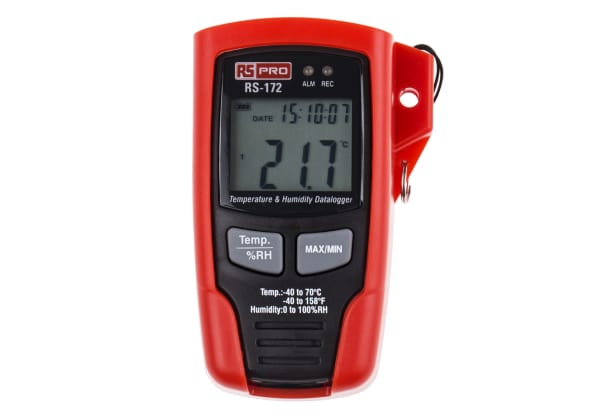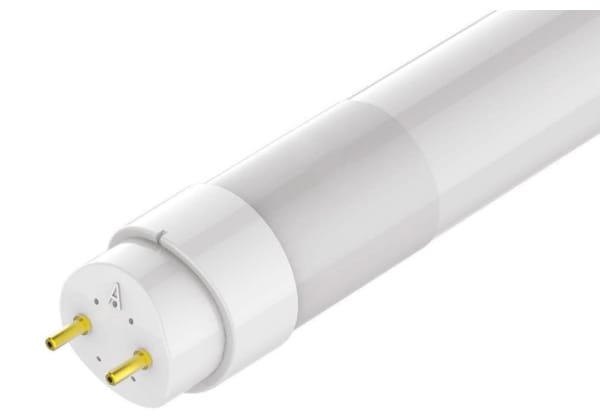- Published 1 Feb 2023
- Last Modified 29 Aug 2023
- 5 min
A Complete Guide to Light Meters
Our light meters and lux meters guide explains their uses, how they work, and how to use them.

What is a Light Meter?
Light meters are lightweight, portable devices that are used to measure the level of light in a location.
These hand-held meters are highly sensitive measuring instruments designed for a variety of uses and applications.
Modern handheld cameras and smartphones include automatic built-in light meters that measure the surrounding illumination and automatically activate the integrated flash when the ambient light is sufficiently low. They measure the light reflected by objects in the frame, but this will provide an incomplete picture.
Light meters can additionally be used to ensure that there is sufficient lighting within a room or building. They are also known as lux meters and exposure meters.

Lux Meters vs Light Meters
Lux and light meters are the same instruments. Lux meters are the commonly used alternative name for light meters as lux is the Latin word for light.
What Do Light Meters Measure?
Light meters are designed for measuring brightness. This typically includes:
- Visible light sources, including the sun and the moon
- Light-emitting bodies
- Fluorescent light
- Incandescent lighting
- LED lights
- UV light sources
- High-pressure sodium and metal halide sources
They can be used in multiple different applications, industries, and environments, but the basic principle remains the same. They are easy-to-use devices designed with accuracy and versatility in mind. It is also worth noting that some models are evaluative, and others have the capability to save measurements either via internal memory or in-built data logger functionality. Some meters may also offer cosine correction of the incident light angle.
Depending on the specific type of meter, light measurements may be recorded in lux (lx), candela per square metre (cd/m2), or footcandles (fc).
How Does a Light Meter Work?

Modern digital light meters employ light sensors that are based on one of three substances - the elements selenium and silicon, and the chemical compound cadmium sulfide (CdS).
The first two are photovoltaic, which means that they generate an electrical charge proportional to the amount of light that hits the sensor. Selenium is particularly sensitive and produces sufficient voltage to operate without a battery. However, these perform poorly in low light and so cannot be used for candlelit or night scenes.
Silicon sensors require both a battery and an amplification circuit but do function adequately in low light. Meanwhile, CdS-based hand-held light meters, which also require a battery, produce an electrical charge which varies in response to light exposure. Thanks to their sensitivity to low light, most modern lux meters are CdS or silicon-based.
In addition to these components, durable housing is used to protect the delicate sensor and provide a more robust product. A lens cap may also be included for additional protection and to ensure the photodiode remains in optimum condition. These measures are particularly useful in heavy-duty industrial environments where the risk of damage is greater.
Most modern meters display their light readings in digital format on an easy-to-read LCD screen. Older models, by contrast, typically use analogue rotary dials or galvanometer displays.
What are Light Meters Used for?
Why use a light meter? There are several reasons, but they have two principal uses:
- Measuring the levels of light in public spaces or workplaces for health and safety reasons
- In photography, to assess the ideal photographic equipment and exposure settings for a planned photoshoot
The first use applies to locations such as offices, hospitals, schools - to any venues, in fact, with significant footfall. Employers have a statutory duty to ensure that workplaces have adequate and suitable lighting, and this has clear safety implications for public spaces too.
Handheld meters are used in professional photography to optimise shots. They measure ambient light and display the ideal shutter speed and aperture number. This is especially valuable in outdoor environments where the levels of ambient light tend to be quite complex.
Cinematographers and film set designers also make use of light meters to ensure scenes will be properly lit.
Other uses for light meters include:
- In hydroponics, to ensure that plants receive adequate light for healthy growth
- In construction and architecture, to ensure that lighting systems have been properly installed
- When installing solar panels, to ensure the optimum position and angle have been chosen
- Measuring light pollution levels, to help monitor and prevent excess light
To summarise, lux meters can be easily used in domestic, commercial and industrial environments to:
- Measure light levels and light intensity
- Provide insights on any adjustments that may be necessary
- Optimise both performance and comfort, depending on the specific application
Which are the Best Light Meters?
Whether you need a light meter for property assessment or film and photography, here are two recommended models.

Best Light Meter for Photography and Film
This versatile model features a sensitive, silicon-based sensor and can read light sources up to 20,000 lux (lumens per square metre). The lumen is an international measurement of brightness. Users can also freeze readings on the large and easily-legible display until they are ready to note them.

Best Budget Light Meter
This light meter is affordable yet still great quality. It can provide accurate readings of LED, fluorescent, and other light sources. It is a tough and easily portable device.
FAQs
What are the Benefits of Light Meters?
The majority of lux meters are small and compact hand-held devices. This means that they are easy to transport and can be used in a wide range of environments. Coupled with their straightforward design, simplistic meter readings, and ease of operation, these instruments typically employ a plug-and-play functionality.
Do Light Meters Need to be Calibrated?
Accuracy is important, so periodically calibrating lux meters is a necessity. The precision of the meter may decrease over time, so calibration can help by ensuring that error-free, accurate readings can be taken at all times. This is particularly important if you need to measure against a previous readout or dataset. It is recommended to get devices calibrated by fully-trained experts in order to ensure maximum accuracy.

